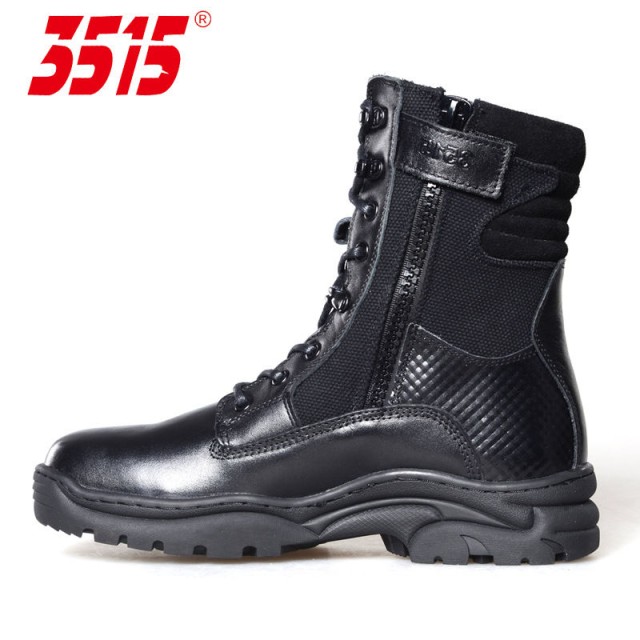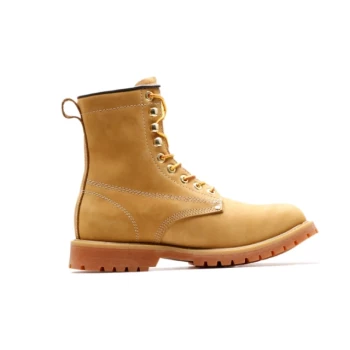Modern workplaces demand more than just durability from footwear—they require intelligent safety engineering tailored to distinct occupational hazards. From construction sites to manufacturing floors, men's work shoes integrate specialized technologies that actively mitigate risks while enhancing productivity.
Men's Work Shoes as Industry-Specific Safety Solutions
Construction: Combatting Impact and Puncture Risks
Construction sites present two primary foot hazards: falling objects and sharp debris. High-performance work shoes address these through:
- Composite toe caps: Lighter than steel but equally effective at absorbing impacts from heavy materials
- Puncture-resistant midsoles: Engineered to stop nails or metal shards from penetrating the sole (recognizable by the green triangle with white 'R' certification symbol)
- Ankle support systems: Reduce twisting injuries on uneven terrain
Research shows proper footwear reduces puncture-related injuries by over 70% in framing and demolition work.
Manufacturing: Balancing Slip Resistance and Chemical Exposure
Factory environments require dual-protection footwear that handles both liquid spills and prolonged standing:
- Oil-resistant outsoles: Maintain traction on greasy surfaces without degrading
- Chemical-barrier uppers: Prevent acids or solvents from reaching the skin
- Electrostatic discharge (ESD) protection: Critical for electronics assembly areas
A study of automotive plants revealed workers wearing compliant shoes experienced 40% fewer slip incidents compared to standard footwear.
Agriculture: Weatherproofing and Biohazard Protection
Farm and ranch footwear tackles unique moisture and biological threats:
- Waterproof membranes: Plastic layers behind the material upper block water ingress during field work
- Self-cleaning treads: Prevent manure and mud accumulation that breeds pathogens
- Insulated linings: Regulate temperature in grain storage or livestock areas
Have you considered how untreated moisture exposure leads to fungal infections? Proper waterproofing eliminates this risk entirely.
Certification Standards and Performance Validation
OSHA, ASTM, and ISO Compliance Across Sectors
Global safety standards ensure consistent protection:
| Standard | Key Requirement | Industry Application |
|---|---|---|
| ASTM F2413 | Impact/puncture resistance | Construction, utilities |
| EN ISO 20345 | Toe protection (SB-S5 ratings) | Mining, heavy manufacturing |
| ISO 20347 | Basic occupational safety (OB-O3) | Warehousing, light industry |
Case Studies: Injury Reduction Through Proper Footwear
- A Texas roofing contractor reduced foot injuries by 58% after switching to ASTM F2413-18 certified boots
- Poultry processing workers reported 62% fewer slip incidents after adopting shoes with SR (slip-resistant) markings
- Dairy farmers saw a 75% decrease in trench foot cases when using waterproof agricultural boots
These technologies quietly redefine workplace safety—one step at a time.
Ready to equip your workforce with industry-optimized safety footwear? 3515 partners with distributors and bulk buyers to deliver certified protection across all high-risk sectors. [Contact our specialists] to discuss your project requirements.
Related Products
- Wholesale Customizable Suede Safety Boots - Puncture-Proof with Velcro Closure
- Safety Footwear Wholesale Manufacturer for Custom OEM/ODM Production
- Wholesale Anti-Smash & Puncture-Proof Safety Shoes Custom Manufacturing for Brands
- Puncture-Resistant Velcro Safety Boots for Wholesale & Custom Manufacturing
- Wholesale Safety Footwear Manufacturer for Bulk & Custom OEM Orders
Related Articles
- Work Boots vs. Western Boots: How to Choose the Right Footwear for Labor Safety
- How to Choose Work Boots That Balance Safety, Comfort, and Durability for Your Job
- How to Extend Work Boot Lifespan: Science-Backed Care for Safety & Savings
- How to Choose Work Boots That Match Your Job's Safety Demands
- How to Choose Work Boot Materials for Maximum Safety and Durability



















